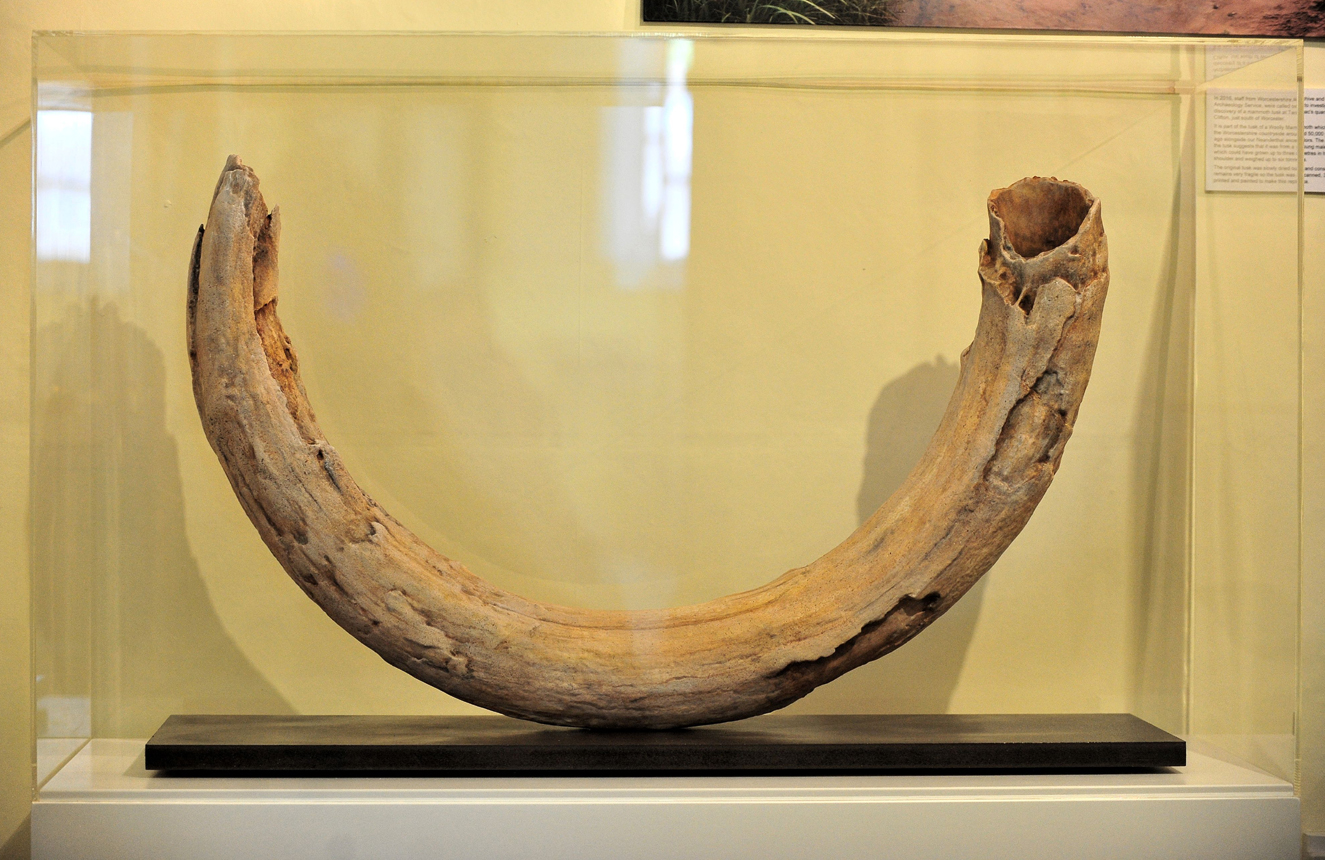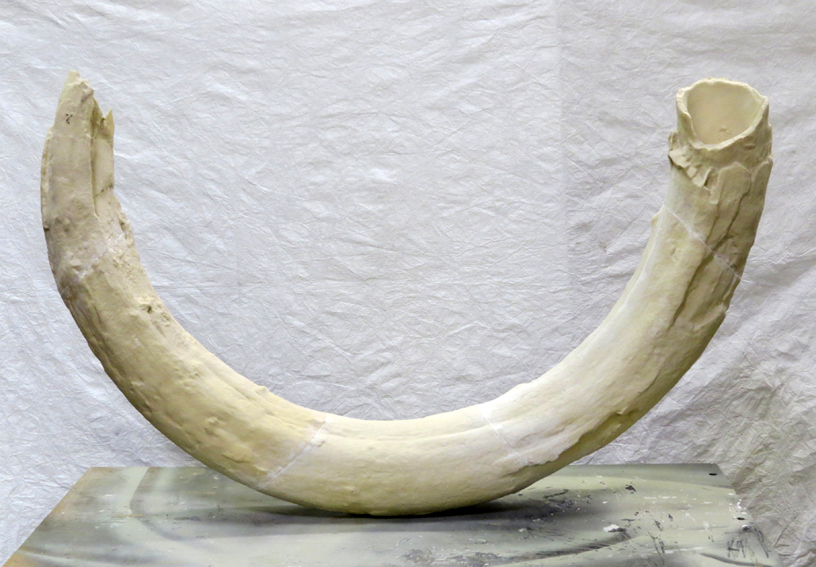Making and mounting a replica of a fragile Woolly Mammoth tusk for Worcester Museum and Art Gallery. Nigel Larkin, July 2018.
 A reasonably complete tusk of a young woolly mammoth (Mammuthus primigenius) was discovered in a gravel pit in Worcestershire in 2016.
The proximal end with the 'pulp cavity' is relatively complete but the tip of distal end has been lost.
There is some damage to the midsection, but otherwise the tusk was in very good condition although it was waterlogged when it was found.
See this webpage for a short report on the conservation of the specimen, and mounting it:
http://www.natural-history-conservation.com/WorcesterMammothTusk.htm .
A reasonably complete tusk of a young woolly mammoth (Mammuthus primigenius) was discovered in a gravel pit in Worcestershire in 2016.
The proximal end with the 'pulp cavity' is relatively complete but the tip of distal end has been lost.
There is some damage to the midsection, but otherwise the tusk was in very good condition although it was waterlogged when it was found.
See this webpage for a short report on the conservation of the specimen, and mounting it:
http://www.natural-history-conservation.com/WorcesterMammothTusk.htm .
As the specimen remains fragile and vulnerable to changes in temperature and relative humidity, a replica was required for display purposes. Heritage 3D specialists
ThinkSee3D Ltd therefore 3D scanned the original tusk in the basement of
Worcester Museum using a scanning method called photogrammetry. Using several hundred photos of the tusk taken from every conceivable angle with a purpose-made
multiple camera rig, a 3D digital model was created using specialist photogrammetry software that converts the multiple photos into a colour 3D model.
This digital model was then uploaded to an online 3D viewer called Sketchfab for sharing with the Worcester Archaeology team and the public. See: https://skfb.ly/6wYKv
Next, the digital model was made into a physical replica with one of the industrial 3D printers owned by ThinkSee3D.
This printer makes 3D objects in bonded gypsum (a material used for centuries to create museum replicas).
This technology is perfect for creating bone, ceramic or stone replicas and even simulated metal and wood replicas with some additional surface treatments.
This 3D printer can even create full colour objects although it was decided in this case to hand paint the 3D print to ensure it matched the original closely.
Due to its size, the tusk was 3D printed in 6 pieces. Nigel Larkin assembled these together on a cunning internal
metal mount deliberately made in a way that
was totally unobtrusive. The tusk simply seems to be carefully balanced on the wooden plinth made for it. The 3D printed tusk was
painted to match the orignal tusk using artists acrylic paints - a very laborious process, but it worked very well.
The mounted specimen was put on display in Hartlebury Castle in July 2018 (see above/left).


Above left: assembling the 3D printed pieces. Above right: the mounted tusk replica before painting.
For more details about what we can do for you, or for a quote, please
contact:
enquiries@natural-history-conservation.com
We
are members of the Institute of Conservation.